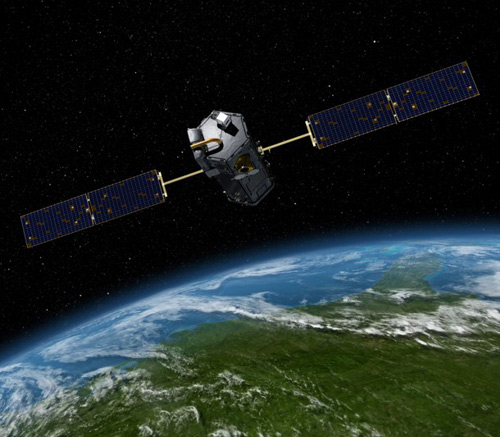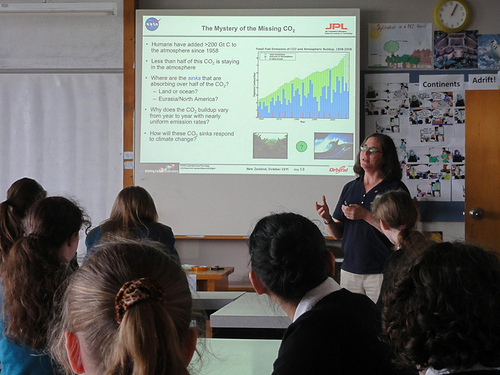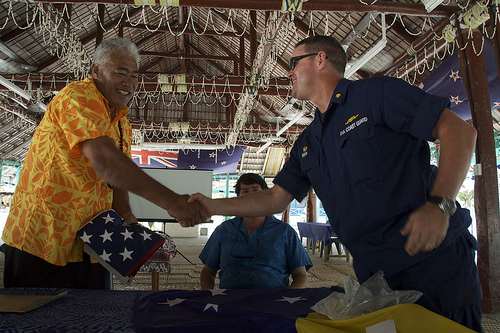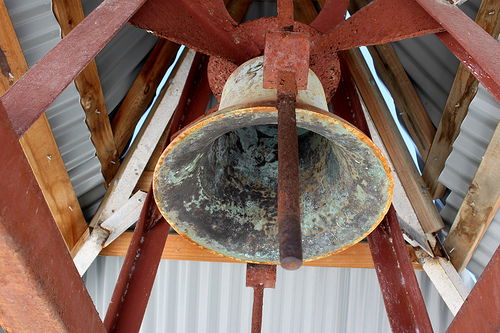My Embassy colleague Mike accompanied me to Antarctica this time. Mike is an economics officer, and he also handles the Embassy’s science, technology, and environment portfolios. US interests in Antarctica are based on promoting three core objectives: scientific advancement, environmental protection, and peace and stability, and our permanent stations are research facilities. Thus, what occurs on the Ice falls directly within Mike’s work.

That's Mike, about to board the C-17 in Christchurch.
Because Mike had not been to the continent before, I thought it might be interesting to hear (and share) his thoughts and impressions. So, I asked him to do a guest post for me, and he readily agreed. He came up with the topic and selected the photos. And, as you’ll see below, he had help from a few collaborators. Mike, take it away.
* * *
ML: Thanks, Ambassador.
I never in my life imagined I would have the opportunity to visit Antarctica. As I looked out the window of the C-17 winging my way to the world’s driest, coldest, windiest, and fifth-largest continent, I strained to see in the distance a mountain — or I should say volcano — that first piqued my curiosity about this remote land.
Growing up, I had a love of all things volcano and spent endless Saturdays in the back yard molding clay volcanoes and concocting mixtures of baking soda, vinegar, and red food dye to create the eruption. (My mom always wondered what happened to all her baking supplies when it came time to bake goodies.)
I also voraciously devoured all the books about volcanoes that I could get my hands on at the small public library in Bozeman, Montana. I recall coming across a book that described Mount Erebus, a volcano in Antarctica named after the primordial Greek god of darkness. How could a volcano exist in such a cold place on the bottom of the world?

Mt Erebus.
My reading encounter with Mount Erebus only sparked my appetite to learn more about Antarctica. Ross, Amundsen, Scott, Shackleton, and other Antarctic explorers soon became part of my boyhood imagination. I could scarcely conceive that I would one day see the same stunning vistas that greeted these intrepid adventurers as they explored and traversed the southernmost continent. To me that is really the essence of science…satisfying that insatiable, exciting, childlike curiosity about what makes the world tick.
Motivated by my own childhood learning experience about Antarctica, I decided before leaving home on this trip that I was going help “facilitate” a similar epiphany for my own four kids, who range in age from six to fourteen. When I corralled them to quiz them about what they knew of Antarctica, they reacted as they normally do to “another one of dad’s hair-brained schemes.”
In the end, I was able to extract a question from each about Antarctica. I promised to talk to the experts down here and answer the questions by doing a guest post on the Ambassador’s blog. I figure maybe someone else just might be interested as well.

One of Antarctica's vast glaciers.
My straight shooting six-year old, threw out the first question: “Dad, how big is Antarctica?” That’s an easy one, but the tricky part is figuring out how to put the answer in terms she can relate to.
The short answer is 13,829,430 square kilometers (5,339,573 square miles). That’s 51 times bigger than New Zealand and 1.4 times bigger than the United States. Of course about 98 percent of that area is covered by ice that averages about 1.6 kilometers in thickness. To boot, the Ross Ice Shelf is about the size of France.

McMurdo Station, viewed from Hut Point.
My eight-year-old deep thinker came out with the next question: “How do people survive the winter in Antarctica?” I asked for help on this one from my new friends at the National Science Foundation who have worked at McMurdo throughout the Austral winter.
According to most estimates there are only about a thousand hardy souls who hunker down in various facilities throughout Antarctica in winter. At McMurdo, the peak population in the austral summer can swell to as many as 1,500 people, which includes scientists, technicians, and support. That number dwindles significantly to about 200 in the austral winter. At the South Pole Station, about 50 winter over, plus another 40 at Palmer Station.
They get through by planning ahead, storing enough food, being careful about about safety and clothing, and making sure that they have the right kinds of emergency equipment and personnel, including doctors and repairmen. And, although it is dark and cold, they keep busy conducting research and making sure the facilities run.

The joint wind farm on the hill between McMurdo Station and Scott Base.
My eleven-year-old technophile son, as I predicted, tossed me a question completely out of my league: “How does McMurdo Station get its power?”
McMurdo is primarily powered by diesel-driven generators, but the United States has been steadily moving to more environmentally friendly energy sources. In January 2010, the US and New Zealand inaugurated the operation of a shared wind-turbine farm that now provides electricity to both McMurdo and Ross Stations – just another example of our extensive, continuing cooperation on Ice. The turbines now provide 100% of Scott Base’s electricity and about 20% of McMurdo’s.

McMurdo memorial to Admiral Byrd, one of the driving forces behind the Antarctic Treaty as well as the first person to fly over the Pole, in 1929.
After threatening my cantankerous teen-aged daughter with being grounded for week, she also coughed up a question: “Okay, so like what country does Antarctica belong to?” Finally, a question a policy wonk like myself can sink his teeth into.
Actually, a number of countries, including New Zealand, have made sovereignty claims over certain regions of Antarctica, but these claims are not universally recognized. As a matter of policy, the United States and many other countries don’t recognize territorial claims on Antarctica, and instead view the continent as a boundary-free common space for everyone.
The issue of territorial claims doesn’t keep us from getting along though. In fact, we all get on very well on the Ice, particularly Americans and Kiwis. American and Kiwi scientists have been working in Antarctica for more than 50 years, and that science and technology partnership has been the bedrock of our bilateral relationship.

Mike at the South Pole.
That’s it for questions today. I’ll be answering more directly with school classes when I get back to New Zealand. Now, my kids will probably never confess that they read my blog, and there is even less of chance they will admit to having learned something. But I’m sure they did.
As for me, visiting the Antarctic is the experience of a lifetime. It rekindled in me a thirst for that process of experimental investigation … also known as science. It’s a shame that so many of us grow into adulthood and forget that indescribable joy of assembling your first bug collection, recreating the solar system on your bedroom ceiling with fluorescent stickers, or figuring out the best way to create static electricity to shock your siblings.
Seeing the cool and exciting work that the US National Science Foundation scientists are doing in the Antarctic made me think. Since when does science have to be about slogging through some dry analytical paper instead of building a mud volcano in the back yard … or climbing into a real one to see what it’s up to?
* * *
Thanks, Mike, for sharing your thoughts and answering a few questions.
If anyone reading my series of Antarctica posts has questions about the continent, the various science projects there, or bilateral US-NZ cooperation on the Ice, please let me know. I’ll ask Mike to do another Q&A post next week when we’re back in Wellington.
![]()
 RSS
RSS

















 View my Profile
View my Profile Connect with Wellington
Connect with Wellington Watch our Videos & Subscribe
Watch our Videos & Subscribe Watch our Videos on Vimeo
Watch our Videos on Vimeo Connect on GPlus
Connect on GPlus US Embassy NZ
US Embassy NZ


 Post Entries (RSS)
Post Entries (RSS)

